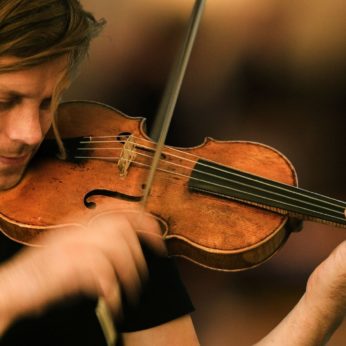La Follia, or Folia, literally meaning madness, folly, or empty-headedness, was described in a Spanish dictionary from 1610 as ‘a noisy dance in which many people take part with instruments’, and which is played so fast that ‘they all seem to be out of their minds’. This musical phenomenon, which over the course of more than 300 years includes compositions by at least 150 composers, exists in two forms, as an early Spanish dance in fast triple time, and as the so-called ‘later Follia’, a simple fixed melody of sixteen bars in 3/4 time over a standard chord progression, bearing all the traits of an elegant sarabande.
It is hard to say exactly when the later Follia came into being, but the earliest printed version appeared in a manuscript by Jean-Baptiste Lully, dated 1672. In 1700, Arcangelo Corelli published his famous op.5 violin sonatas, including at the end a set of modern variations on the “old” Follia theme. Five years later, just prior to his appointment as maestro di violino at the Pietà in Venice, Antonio Vivaldi published his op.1, a set of twelve trio sonatas for two violins and continuo, and either as a tribute to Corelli or as some kind of claim to being his equal, Vivaldi included as the last work a virtuosic set of 19 variations on the Follia theme. Despite never deviating from the opening key of d-minor or from the 3/4 time signature, Vivaldi manages to create work which keeps the audience engaged every step of the way.
One could ask what the mystery is behind the appeal for the Follia? Perhaps it can be explained in it’s perfect symmetry, satisfying the human’s eternal pursuit for balance and harmony, or perhaps it simply that the Follia is a pleasant piece of music to listen to, crossing musical genres and equally at home in the country dance hall as the stately courts.
